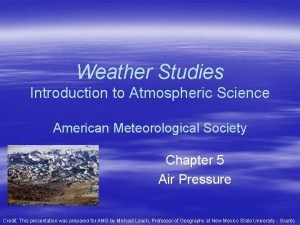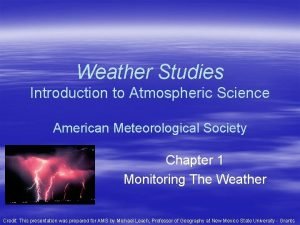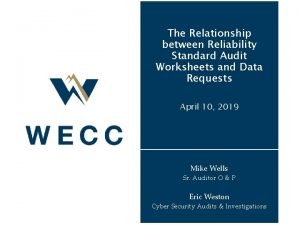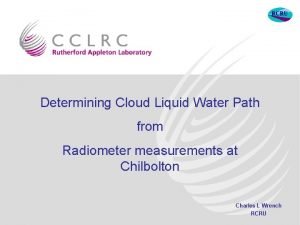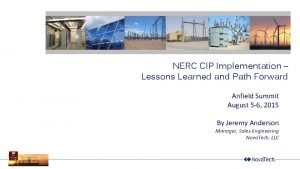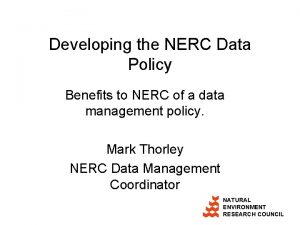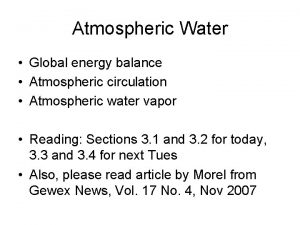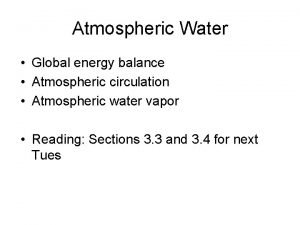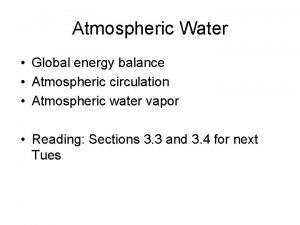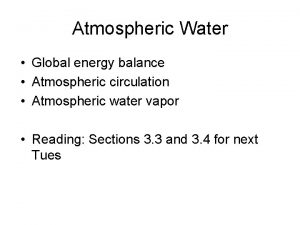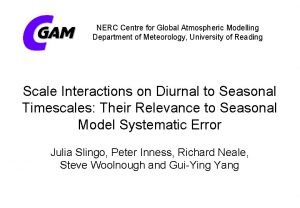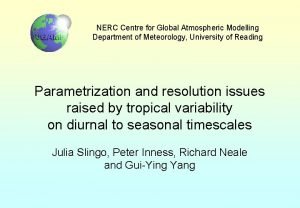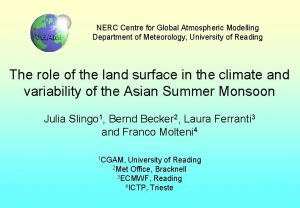Launch of NERC Centres for Atmospheric Science Environment


















- Slides: 18

Launch of NERC Centres for Atmospheric Science, Environment and Government Professor David King Government Chief Scientific Adviser 29 May

The Montreal Protocol on Substances that deplete the Ozone Layer • Agreed upon on 16 September 1987 • Constructively flexible • Final objective: elimination of all ozonedepleting substances • 29 original Parties, now over 180 Signatories to the Protocol




Change in Precipitation By 2080 s (UKCIP 02 scenarios - published April 2002) winter Hadley Centre for Climate Prediction and Research summer %

Change in the return periods of extreme water levels for Immingham on the east coast of England 2080 s Current climate The 2080 s climate includes a rise in mean sea level (30 cm), changes in storminess and vertical land movements. Published April 2002 as part of UKCIP 02

Climate Change: The International Policy Making Agenda Kyoto Protocol: developed countries to cut greenhouse gases by 5. 2% below 1990 levels by 2008 -2012 EU has agreed to cut its emissions by 8% - UK’s contribution will be a cut of 12. 5% UK has domestic target to cut CO 2 by 20% below 1990 levels by 2010 Royal Commission of Environmental Pollution has said that CO 2 emissions must be reduced by 60% by 2050

Climate Change: The International Policy Making Agenda • 7 th Conference of the Parties (COP 7, Marrakesh, November 2001) – Over 160 countries agreed the rules for implementing the Kyoto Protocol • Kyoto Protocol must be ratified by at least 55 countries for it to enter into force

Climate Change: The International Policy Making Agenda – UK and all other EU Member States will have completed ratification procedures by 31 May 2002 – US remains outside of Kyoto process following their announcement in February of a voluntary greenhouse gas emissions limitation policy – Without US on board, it is essential for both Russia and Japan to ratify as well as EU

Energy Strategy • Not trying to pick winners • Must create broad menu of sustainable options • Importance of cross-cutting technologies Context • Performance and Innovation Unit Review of Energy Policy: Report recently published • Review of Energy Research, chaired by CSA, also recently published

Key Recommendations From The Energy Review Research Review Report • Spending on energy research should be brought more in line with that of our nearest industrial competitors in Europe • Six key areas for increased R&D investment identified: – Carbon sequestration – Energy efficiency – Hydrogen – Nuclear – Solar PV – Wave and Tidal • Consideration should be given to the establishment of a national energy research centre to boost research in the UK – Research Councils are working up proposals

Follow-up to the PIU Review • Publication of PIU review is first step in wider debate about energy policy • Next step is consultation to help draw up White Paper towards end of year – Stakeholder consultation via internet-launched document (14 May) – Wider process engaging public – mix of methods seeking genuine public involvement in policy-making

Primary Energy 1500 Solar Geothermal Wind Biomass 1250 World Energy Demand (Exajoules) 1000 Hydro 750 Nuclear 500 Gas and Coal CH 4/H 2 250 Oil 0 Coal Traditional 1850 1875 1900 1925 1950 1975 2000 2025 2050 Copyright – Shell International Ltd

One Size Fits All PEM Fuel Cell $ per k. W 100, 000 1, 000 Gas turbine 100 10 1960 Source: Powering the Future, Koppel, 1999 1980 2000 2020 Copyright – Shell International Ltd

The Hydrogen Economy How would we best produce hydrogen? – One possible route could be to use nuclear-generated electricity to electrolyse water. Nuclear Power Electricity Hydrogen?

The Hydrogen Economy and Air Quality • Hydrogen is ‘clean’. When used as a fuel for running cars, or for heating or providing electricity to homes and businesses, it releases only water vapour into the atmosphere • Creating and using hydrogen results in zero emissions if it is created using electrolysis, and the electricity is generated by renewable (e. g. wind, wave and solar) or nuclear sources

The Hydrogen Economy and Air Quality • Hydrogen vehicles will lead to air quality improvements in town centres, even if creation of hydrogen results in emissions. This is because: – Using hydrogen to power vehicles is completely clean – Emissions will move from urban centres, where the worst pollution problems are, to other areas
 Information analysis and consolidation centres
Information analysis and consolidation centres Types of information centres in library science
Types of information centres in library science Penn state atmospheric science
Penn state atmospheric science Weather studies introduction to atmospheric science
Weather studies introduction to atmospheric science Weather studies introduction to atmospheric science
Weather studies introduction to atmospheric science What is nerc cip
What is nerc cip Time management conference
Time management conference Nerc rsaws
Nerc rsaws Spp texas
Spp texas Nerc cip webinar
Nerc cip webinar Stratoculus
Stratoculus Nerc adalah
Nerc adalah Nerc lessons learned
Nerc lessons learned My favourite subject is maths
My favourite subject is maths Gurnell gym
Gurnell gym Scdl evaluation methodology
Scdl evaluation methodology Medullary respiratory centers
Medullary respiratory centers Greenwich leisure centres
Greenwich leisure centres Absolute configuration
Absolute configuration



